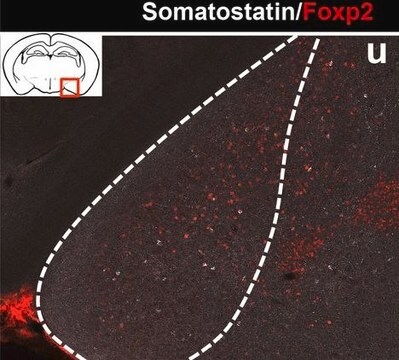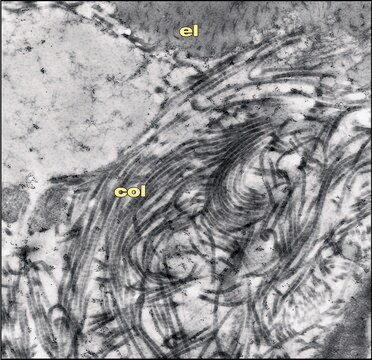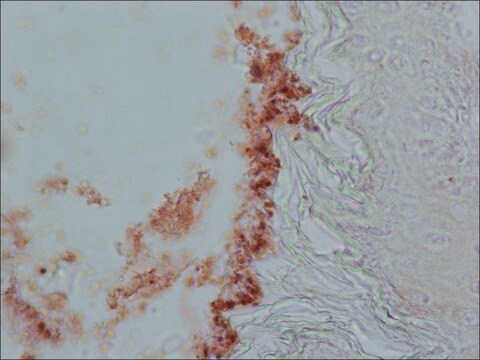P3088
Monoclonal Anti-Parvalbumin antibody produced in mouse
clone PARV-19, ascites fluid
Sinonimo/i:
Parvalbumin Antibody, Parvalbumin Antibody - Monoclonal Anti-Parvalbumin antibody produced in mouse
About This Item
Prodotti consigliati
Origine biologica
mouse
Livello qualitativo
Coniugato
unconjugated
Forma dell’anticorpo
ascites fluid
Tipo di anticorpo
primary antibodies
Clone
PARV-19, monoclonal
PM
antigen 12 kDa
contiene
15 mM sodium azide
Reattività contro le specie
fish, frog, rabbit, canine, feline, bovine, pig, human, goat, rat
tecniche
immunohistochemistry: suitable
indirect ELISA: suitable
western blot: suitable (10-20K titer using Mouse skeletal muscle extract expressing Parvalbumin protein)
Isotipo
IgG1
N° accesso UniProt
Condizioni di spedizione
dry ice
Temperatura di conservazione
−20°C
modifica post-traduzionali bersaglio
unmodified
Informazioni sul gene
human ... PVALB(5816)
rat ... Pvalb(25269)
Descrizione generale
Monoclonal Anti-Parvalbumin (mouse IgG1 isotype) is derived from the PARV-19 hybridoma produced by the fusion of mouse myeloma cells and splenocytes from an immunized mouse. Parvalbumin is a calcium-binding protein.
Specificità
Immunogeno
Applicazioni
Azioni biochim/fisiol
PVALB (parvalbumin) expression serves as marker for differentiating tumors as benign and malignant, in relation with thyroid lesions. Decreased expression of parvalbumin positive interneurons in rat model is associated with schizophrenia, and is known to disturb neuronal activity.
Stato fisico
Stoccaggio e stabilità
For extended storage freeze in working aliquots. Repeated freezing and thawing is not recommended. Storage in "frost-free" freezers is not recommended. If slight turbidity occurs upon prolonged storage, clarify the solution by centrifugation before use.
Esclusione di responsabilità
Non trovi il prodotto giusto?
Prova il nostro Motore di ricerca dei prodotti.
Raccomandato
Codice della classe di stoccaggio
10 - Combustible liquids
Punto d’infiammabilità (°F)
Not applicable
Punto d’infiammabilità (°C)
Not applicable
Certificati d'analisi (COA)
Cerca il Certificati d'analisi (COA) digitando il numero di lotto/batch corrispondente. I numeri di lotto o di batch sono stampati sull'etichetta dei prodotti dopo la parola ‘Lotto’ o ‘Batch’.
Possiedi già questo prodotto?
I documenti relativi ai prodotti acquistati recentemente sono disponibili nell’Archivio dei documenti.
I clienti hanno visto anche
Il team dei nostri ricercatori vanta grande esperienza in tutte le aree della ricerca quali Life Science, scienza dei materiali, sintesi chimica, cromatografia, discipline analitiche, ecc..
Contatta l'Assistenza Tecnica.












